- Home
- Nathaniel Hawthorne
The Blithedale Romance Page 2
The Blithedale Romance Read online
Page 2
To be sure, little of the political turmoil of the period directly made its way into Hawthorne’s narrative. But it was, nonetheless, that very turmoil which gave rise to experiments like his fictive Blithedale, just as it was the issues of these decades which helped to create recognizable characters in a philanthropist like Hollingsworth, an intellectual feminist like Zenobia, and a poor, exploited seamstress like Priscilla. Those same social and economic tensions may even account for mid-nineteenth-century America’s fascination with mesmerism and clairvoyance, the nation believing that if it could not escape into some utopian agrarian past, then at least it might receive saving messages from what one character in the novel denominates “futurity.”
To understand how The Blithedale Romance was received in its own time, then, we must remember that, often enough, those who reviewed the novel held decided opinions both on the problems of the day and on the solutions advanced to resolve them. Thus one reviewer cried foul because he felt that Hawthorne (through Coverdale’s voice) had unfairly “made [socialism] responsible for consequences which it utterly condemned, and tried, at least, to remedy” Another, with a different political cast, applauded the story for exposing “the vanity and selfishness which underlie the seemingly worthy and benevolent purposes of [those], who engage themselves in ... schemes of politico-moral reformation.”
These disagreements have persisted even into our own century. The anti-Communist witch-hunts of the 1950s led critics to wonder, yet again, what lessons Hawthorne had gleaned from his single exposure to homegrown agrarian socialism. The civil rights and anti—Vietnam War movements of the 1960s encouraged other critics to examine Hawthorne’s fictional response to organized efforts at social reform. And the renewed interest in communes which marked the 1960s, the women’s movement of the 1960s and 1970s, along with a growing concern for the environment that began in the 1970s and continues into the twenty-first century—all these have repeatedly made The Blithedale Romance a peculiarly timely text. As in the nineteenth century, however, the prior political sympathies of many critics have continued to influence their reading of the novel. As a result, twenty-first century critics still argue over the book’s autobiographical authenticity in an effort to get at Hawthorne’s judgment of Brook Farm. No discussion is complete without some analysis of Hawthorne’s relationship to his narrator, Miles Coverdale.
Before entering into these debates—and they are, after all, impossible to ignore—we should try to ascertain what Hawthorne thought he was doing as he composed his third major romance.
II
On July 24, 1851, in a letter to his friend William B. Pike, Hawthorne speculated that, “When I write another romance, I shall take the Community for a subject, and shall give some of my experiences and observations at Brook Farm.” Presumably with that in mind, he borrowed from one of his previous Brook Farm associates “two or three volumes of Fourier’s works ... with a view to my next Romance.” In that act, he was already veering from his determination to delineate his own “experiences and observations.” For, during its early years and while Hawthorne was in residence, Brook Farm remained a private cooperative organized as a joint stock company, its members attempting to support themselves by means of the school and the farm they ran. Not until 1844, amid much argument, did Brook Farm reorganize itself according to the principles of the French social theorist Charles Fourier. Of course, in the popular imagination, it was forever after associated with Fourierism, in part because of the journal published there, devoted to the dissemination of Fourier’s theories. And it may have been to this popular image that Hawthorne was now inclining.
By the time he had finished his writing, however, Hawthorne seemed no longer certain that “the Community,” by itself, constituted the central interest of his story. The manuscript that he sent on May 2, 1852, to his friend, the literary critic Edwin Percy Whipple (later his most astute reviewer), had “Hollingsworth: a Romance” on the title page. In the covering letter to Whipple, Hawthorne suggested other titles, none of which pleased him, and he hoped that “just the thing” would “pop into [Whipple’s] mind.” Whipple’s reply no longer exists, so we cannot know whether his remarks influenced the choice of title. And we cannot know whether Whipple’s response to the manuscript prompted Hawthorne’s subsequent decision, as he put it in his notebook, to “modif[y] the conclusion,” thereby lengthening the text by two handwritten pages. (The modification was probably the addition of the final chapter, “Miles Coverdale’s Confession.”)
The single unchanging feature in Hawthorne’s letters and notebook entries regarding the new project—and what the final choice of title absolutely confirmed—was that, whatever its real-world antecedents, Hawthorne all along knew himself to be composing a romance. That is, as he tried to explain in his Preface, he was composing a type of fiction in which there was to be understood “a suitable remoteness” from “every-day Probability.” Though he readily admitted to “a faint ... shadowing of Brook Farm” in his depiction of Blithedale, Hawthorne cautioned readers not to expect any faithful historical rendering either of the place or of the people he had known there. If readers would have an authentic account, then they should turn to the founders and supporters—the renegade Unitarian minister George Ripley; the newspaper editor Charles Anderson Dana; the music critic John Sullivan Dwight; the Unitarian minister and social reformer William Henry Channing; the Unitarian minister and educator Warren Burton; or the Unitarian minister Theodore Parker, whose West Roxbury parish was attended by many Brook Farm residents. These were the men, Hawthorne felt, to “give the world its history.” For himself, he had finally come to be interested in the place only as a suggestively suitable “theatre, a little removed from the highway of ordinary travel, where the creatures of his brain may play their phantasmagorical antics.”
Impressions stored in notebook entries and letters written from Brook Farm do, nonetheless, confirm Hawthorne’s assertion that he had “occasionally availed himself of his actual reminiscences” in composing this romance. Miles Coverdale’s arrival at Blithedale in the midst of a snowstorm and his subsequent illness, for example, coincide with Hawthorne’s first days at Brook Farm. So, too, the grapevines that climb to the treetops, the description of various farm chores, Coverdale’s farewell to the swine, and the woodland masquerade—all these issue from Brook Farm memories. And all this Hawthorne easily conceded. He asked only that his readers appreciate the “fictitious handling” to which his experiences had been subjected, and he urged them to accept the Blithedale inhabitants as “imaginary personages.”
His pleas that the work be taken as a fiction nothwithstanding, Hawthorne also seems to have anticipated readers’ propensities for discovering flesh-and-blood originals behind “imaginary personages.” In a playful nod at such habits, he may even have tried to confuse readers by having Coverdale receive a letter from Margaret Fuller and by having Coverdale briefly note a physical resemblance between the famous women’s rights advocate and Priscilla. But readers were not so easily thrown off the trail. Successive generations have insisted on the historical Margaret Fuller (whom Hawthorne and his wife both knew) as the prototype for Zenobia—not Priscilla—even though Zenobia articulates only a debased version of the arguments put forth in Fuller’s. Woman in the Nineteenth Century (1845).
No doubt Fuller was in Hawthorne’s mind as he invented Zenobia. Though never a resident at Brook Farm, she supported the venture and visited there frequently during its first year, offering evening lectures on a variety of topics. But so, too, Hawthorne was recalling Mrs. Amelia Barlow, the Brook Farm resident upon whom he modeled Zenobia’s luxuriant physical features. The same is also true of Priscilla, who may have been drawn as much from “a little sempstress from Boston, about seventeen years old,” the subject of a notebook entry on October 9, 1841, as from Hawthorne’s firsthand encounters with friends and relatives who ardently believed in mesmerism, clairvoyance, and the many current working mediums then claiming direct communication
with spriritual realms.
Hollingsworth, too, has suffered the fate of narrowed identifications. If, to be sure, he reflects something of George Ripley, the visionary responsible for the founding of Brook Farm, and something of the reformist zeal of Orestes Brownson, he also takes substance from Charles and Murray Spear, two brothers who counseled prisoners in the Boston area—neither of whom had ever had any contact with Brook Farm. But to read Hollingsworth merely as a representation of one or another of these historical personages is to thwart Hawthorne’s fictional purposes.
The most troubling identification that Hawthorne anticipated derived from his unusual decision to utilize a first-person narrator. Too easily, he knew, readers would confuse Coverdale’s voice with the author’s and believe they were getting Hawthorne’s views in Coverdale’s. In that event, Coverdale’s perceptions of Blithedale might be taken as Hawthorne’s indictment of what still remained for him “the most romantic episode of his own life.” To preempt so facile an interpretation, Hawthorne used his Preface to emphasize that his whole treatment of Brook Farm was fictitious and that, anyway, “the affair is altogether incidental to the main purpose of the Romance.” This was not autobiography or political tract, he wanted readers to understand, and he was not using Coverdale’s voice to put forward either a personal history of Brook Farm or any theory or conclusion, “favorable or otherwise, in respect to Socialism.”
These are not disingenuous protestations. For, as with everything he wrote, Hawthorne had simply mined the observations and ruminations collected in his notebooks and adapted these for present fictive purposes. The saloon in which Coverdale is offered old Moodie’s life story makes use of a lengthy notebook entry of 1850, when Hawthorne recorded a visit to Parker’s saloon in Boston. And the most dramatically rendered scene in the novel—the search for Zenobia’s drowned body—is taken, in parts almost verbatim, from an incident that occurred on July 9, 1845, when a nineteen-year-old schoolmistress in Concord took her life. Both, we note, postdate Hawthorne’s time at Brook Farm.
Despite all the evidence that may be adduced concerning real-world models, the characters and their stories should be taken as Hawthorne wanted—that is, as “entirely fictitious.” “The self-concentrated Philanthropist; the high-spirited Woman, bruising herself against the narrow limitations of her sex; the weakly Maiden, whose tremulous nerves endow her with Sibylline attributes; the Minor Poet, beginning life with strenuous aspirations, which die out with his youthful fervor—all these might have been looked for, at Brook Farm,” Hawthorne reminds us, “but, by some accident, never made their appearance there.” To understand what Hawthorne intended as “the main purpose of the Romance,” therefore, we must read The Blithedale Romance as he enjoined: “Do not read it as if it had anything to do with Brook Farm (which essentially it has not),” he wrote to a former Brook Farm acquaintance in 1852; rather, read it “merely for its own story and characters.”
III
The story that emerges is one of failed possibilities and multiple human betrayals. The fragile fabric of community that binds the four central characters is gradually rent as, one by one, each plays false to another and, together, they make a mockery of “the blessed state of brotherhood and sisterhood, at which we aimed.” Zenobia and Hollingsworth will be seen as complicitous in returning Priscilla to her hated bondage as the Veiled Lady. Hollingsworth will be seen to spurn Zenobia after she has been disinherited and can no longer supply the funds for his philanthropic schemes. In their unconditional ardor for Hollingsworth, both Zenobia and Priscilla appear prepared to support him in destroying Blithedale so that his obsession—an edifice for the rehabilitation of criminals—may be built instead. Even Miles Coverdale, having been tenderly nursed through his illness by Hollingsworth, begins to suspect “that Hollingsworth could have watched at my bedside, with all that devoted care, only for the ulterior purpose of making me a proselyte to his views!”
The denial of these characters’ claims upon one another inheres in language that is suggestively and insistently erotic. As might be expected after the tenderness in the sickroom, the philanthropist employs charged phrasing when he implores the younger man to join him in his project to “greatly benefit mankind.” “Coverdale,” murmurs Hollingsworth, “there is not the man in this wide world, whom I can love as I could you. Do not forsake me!” Acknowledging his attraction to the philanthropist, Coverdale feels the man “pulling [my heart] towards him with an almost irresistible force.” Even so, Coverdale does refuse to join in the undoing of Blithedale. In consequence, the philanthropist experiences himself forsaken, rejected by his one potential “friend of friends, forever.” And Coverdale, disappointed that “Hollingsworth failed me,” contents himself with solitude in his leafy bower because “there was no longer the man alive with whom I could think of sharing all.”
So charged is the language of this confrontation that, by the end of Chapter XV, we feel almost that we have witnessed a failed seduction. The title of the chapter, “A Crisis,” supports that impression, signaling a common nineteenth-century euphemism for sexual excitation. But the crisis between Coverdale and Hollingsworth is not the novel’s only suggestion of failed intimacy between charcters of the same sex. When Priscilla first arrives at Blithedale, falling upon her knees before Zenobia, she recapitulates the familiar pose of the suitor in nineteenth-century melodrama. Only here the suitor is a sister, and the adoration she offers is not so much rejected as betrayed. The frail girl who begs that Zenobia “will let me be always near her” is, instead, bound over by Zenobia to the evil mesmerist Westervelt.
There is, of course, throughout the novel a symbolic layering of sexual possibility. We see it in the description of Priscilla’s curious purses, in Coverdale’s regressive hermitage amid the grapevines, in the sensuous Zenobia’s badinage about “the garb of Eden.” The point to be made is that—as with the failed seductions—the promised sexuality is never fulfilled. In the face of Zenobia’s “fine, perfectly developed figure,” Coverdale will look instead to the girlish, asexual Priscilla or the womblike containment of his “leafy cave,” while Hollingsworth will grapple with Zenobia’s body only after her death.
Generally, this insistent erotic suggestiveness serves as a counterpoint to all the other promises of Blithedale left unattempted and unconsummated. More specifically, it focuses a key element in the unfolding relationship between the principals by emphasizing the pervasive failure of “love and free-heartedness” between and among them. Let us understand that it is not only the betrayals between men and women that are meant to chill. In the terms in which Zenobia characterizes relations between the sexes, these are almost to be expected. But in an age when male and female spheres were more strictly demarcated than they are today, and in a period when lifelong emotional intimacy meant friends and relatives of one’s own sex (rather than one’s spouse), the truly chilling rupture, the “absolute torture of the breast” (as Coverdale put it) was betrayal by a putative brother or sister. Which was precisely the imagery invoked at Blithedale. “We will be brethren and sisters,” Zenobia announces to Coverdale upon his arrival, “and begin our new life from day-break.” Into such harmonious family imagery, the note of eroticism breaks with a jarring and disruptive chord, promising what the narrative implies cannot be realized.
Precisely that disjunction between what the Blithedalers espouse and what they actually experience gives The Blithedale Romance its peculiar fascination. For, the fact is, within the story told by Miles Coverdale, we see none of the benefits of the communitarians’ “new arrangement of the world.” Coverdale reminds us of continuing class distinctions at what is supposed to be the communal board. Since no evidence is offered to the contrary, we must assume the continuing rigid division of labor by sex—even though Zenobia had hoped that, “by-and-by, ... some of us, who wear the petticoat, will go afield, and leave the weaker brethren to take our places in the kitchen!” The almost religious fervor with which the fledgling farmers first “purpose
d to offer up the earnest toil of our bodies” turns out, Coverdale admits, not “quite so well as we anticipated.” In contrast to the popular agrarian mythology that working the soil ennobles, he finds that farm chores “symbolized nothing, and left us mentally sluggish in the dusk of the evening.” And even the hope of avoiding “selfish competition with a neighbor” falls victim to economic imperatives as Coverdale realizes “that, as regarded society at large, we stood in a position of new hostility, rather than new brotherhood.”
That same disjunction between intent and realized action also raises questions about the man upon whom we are dependent for everything we know about the place. His is the voice, after all, telling us from the outset that any vision “worth the having ... is certain never to be consummated otherwise than by a failure.” Could a man who holds such a view offer a story about anything other than failure, we wonder.
IV

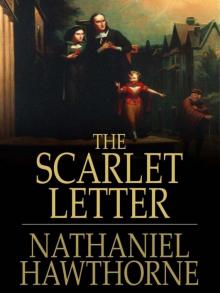 The Scarlet Letter
The Scarlet Letter Young Goodman Brown : By Nathaniel Hawthorne - Illustrated
Young Goodman Brown : By Nathaniel Hawthorne - Illustrated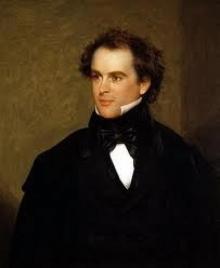 The Birthmark
The Birthmark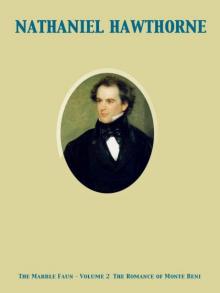 The Marble Faun; Or, The Romance of Monte Beni - Volume 1
The Marble Faun; Or, The Romance of Monte Beni - Volume 1 The Minister's Black Veil
The Minister's Black Veil The Great Stone Face, and Other Tales of the White Mountains
The Great Stone Face, and Other Tales of the White Mountains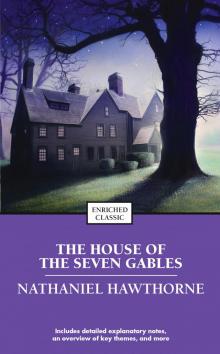 The House of the Seven Gables
The House of the Seven Gables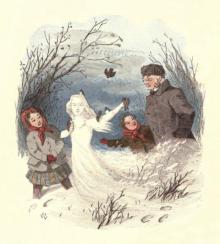 The Snow Image
The Snow Image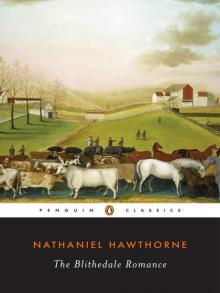 The Blithedale Romance
The Blithedale Romance Rappaccini's Daughter: By Nathaniel Hawthorne - Illustrated
Rappaccini's Daughter: By Nathaniel Hawthorne - Illustrated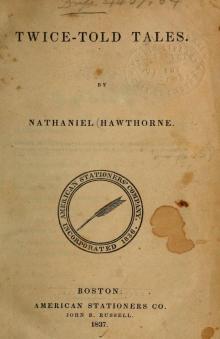 Twice-Told Tales
Twice-Told Tales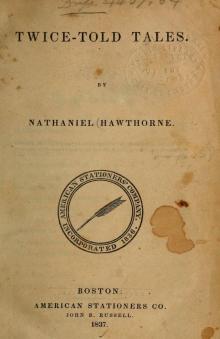 Twice Told Tales
Twice Told Tales The Marble Faun; Or, The Romance of Monte Beni - Volume 2
The Marble Faun; Or, The Romance of Monte Beni - Volume 2_preview.jpg) Footprints on the Sea-Shore (From Twice Told Tales)
Footprints on the Sea-Shore (From Twice Told Tales) Main Street
Main Street_preview.jpg) The Seven Vagabonds (From Twice Told Tales)
The Seven Vagabonds (From Twice Told Tales) Fanshawe
Fanshawe Chippings with a Chisel
Chippings with a Chisel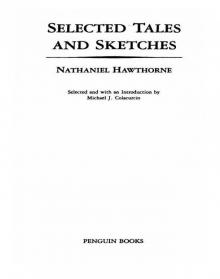 Selected Tales and Sketches
Selected Tales and Sketches Young Goodman Brown
Young Goodman Brown Roger Malvin's Burial
Roger Malvin's Burial The Prophetic Pictures
The Prophetic Pictures The Village Uncle
The Village Uncle Scarlet Letter (Barnes & Noble Classics Series)
Scarlet Letter (Barnes & Noble Classics Series) The Procession of Life
The Procession of Life Drowne's Wooden Image
Drowne's Wooden Image Hawthorne's Short Stories
Hawthorne's Short Stories My Kinsman, Major Molineux
My Kinsman, Major Molineux Legends of the Province House
Legends of the Province House Foot-Prints on the Sea-Shore
Foot-Prints on the Sea-Shore The Haunted Quack
The Haunted Quack Tanglewood Tales
Tanglewood Tales The Seven Vagabonds
The Seven Vagabonds Mosses from an Old Manse, Volume 2
Mosses from an Old Manse, Volume 2 The Canterbury Pilgrims
The Canterbury Pilgrims Wakefield
Wakefield The Gray Champion
The Gray Champion The White Old Maid
The White Old Maid The Snow-Image: A Childish Miracle
The Snow-Image: A Childish Miracle The Gentle Boy
The Gentle Boy Mr. Higginbotham's Catastrophe
Mr. Higginbotham's Catastrophe![The Threefold Destiny: A Fairy Legend, by Ashley Allen Royce [pseud.] Read online](http://i1.bookreadfree.com/i2/04/10/the_threefold_destiny_a_fairy_legend_by_ashley_allen_royce_pseud__preview.jpg) The Threefold Destiny: A Fairy Legend, by Ashley Allen Royce [pseud.]
The Threefold Destiny: A Fairy Legend, by Ashley Allen Royce [pseud.] Lady Eleanore`s Mantle
Lady Eleanore`s Mantle The Great Carbuncle
The Great Carbuncle The Portable Hawthorne (Penguin Classics)
The Portable Hawthorne (Penguin Classics)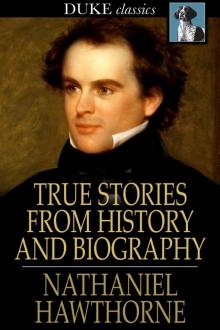 True Stories from History and Biography
True Stories from History and Biography